I recently started to think about printing photos “the old fashioned way”, using light sensitive photo paper in a laboratory. I heard there were a few self-service printing laboratories in Paris and knew this would be much easier than trying to gather the equipment myself.
Initially my aim was to find a way to print my digital photos on photo paper. Digital photos can be printed to a very high standard using an inkjet printer and quality photo paper. Printing digital photos repeatable to a high quality on an inkjet does require some skill to calibrate everything and get good results, but it’s not that difficult to mass produce copies to a high quality once the calibration is done. Printing on photo paper in a dark room wouldn’t really produce better quality prints than inkjet, but it would make the resulting prints special as they would be unrepeatable.
None of the self service labs in Paris offer a high hybrid digital to photo paper process at the moment. So I decided to shoot off a roll of film to see analogue printing works and if the lab equipment available might in some way be adapted to printing digital photos.
I found Emulsion Lab listed on the “3 Bains” photographers association website and decided to try them because they had regular courses and made it very easy to book a private dark room for a four hour slot.
I opted to try their colour printing course, because I had printed some black and white at school (a long time ago) but knew the black and white printing process was straightforward. Getting the colour photos to develop is more challenging, so I thought it would be good to understand it.
I enjoyed shooting my film roll and dropping the canister at the lab. It reminded me of the excitement of dropping off our holiday photos with my parents when I was young.
The course was four hours and time just flew by because there was a lot to learn and try. It was lab co-owner, David, who gave the course. There was quite a bit of time explaining how the enlarger worked, then how to use the huge colour photo printing machine to develop the photos.
The printing machine was a surprise to me. I had assumed we’d be using baths like black and white printing. Colour photo development can be done in baths, but it’s very difficult as the process needs to be done in absolute dark, no safety lamp, and very tightly controlled, including the chemical bath temperature. To make things easier Emulsion Lab has a machine that you feed the exposed paper in at one side and after a few minutes the developed photo rolls out the other side. Feeding the photo in must be done in absolute dark, so the feed end of the machine is a small room accessed via a sort of air lock door. It feels very exciting going in there.
Then we were ready to try printing our contact sheets.
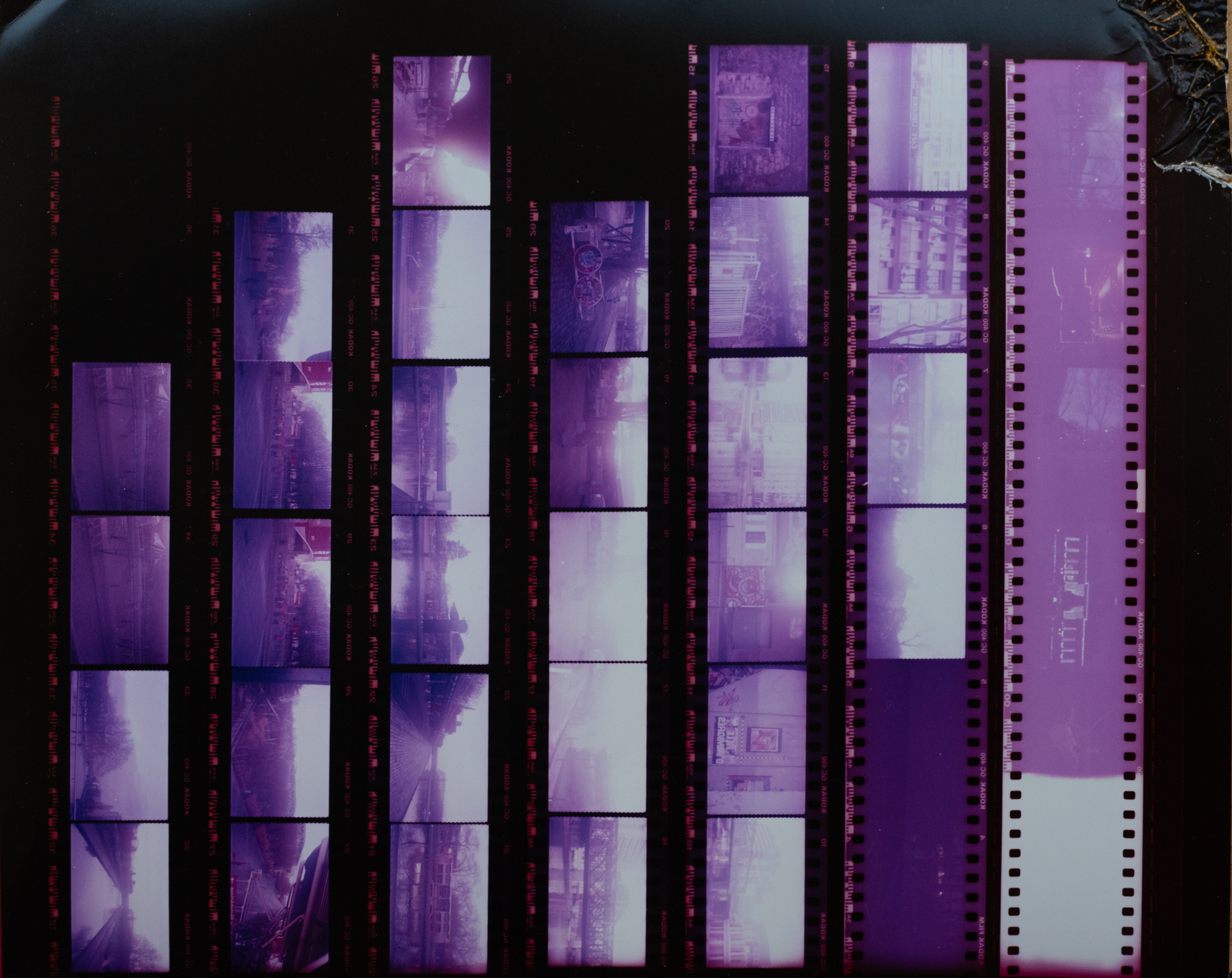
You’ll notice the corner of my first contract sheet is damaged. That’s because I didn’t feed it into the machine straight, so was damaged in the printing process, just one of the many mistakes you can make printing photos.
You’ll also probably notice the magenta tinge. David deliberately miscalibrated the enlarger to teach us about colour theory. Each enlarge has a set of cyan magenta yellow filters built in, the subtractive primary colours. These filters need to be tuned to give the right colour balance, my filters were initially set to C0 M0 Y20, so I need to increase the magenta filter to get closer to the true colours.
The sharp eyed may also notice that frames at the top of the sheet are generally lighter than frames at the bottom of the sheet. This is because I progressive uncovered the negatives with a piece of cardboard giving each row of negatives 3 seconds more than the last. So the darker frames at the bottom have had most exposure, 20 seconds, while the top row had just 3 seconds exposure. This is to test what is the correct exposure time for printing this set of negatives.
Theoretically it is easy to understand that in the negative to positive process more light results in a dark image, however in practice this bit of theory seemed difficult for all the students.
It was hard to judge the right exposure for my contact sheet, as the exposure in my frames varied a lot, but for the next sheet I settled on 12 seconds and C0 M20 Y20.
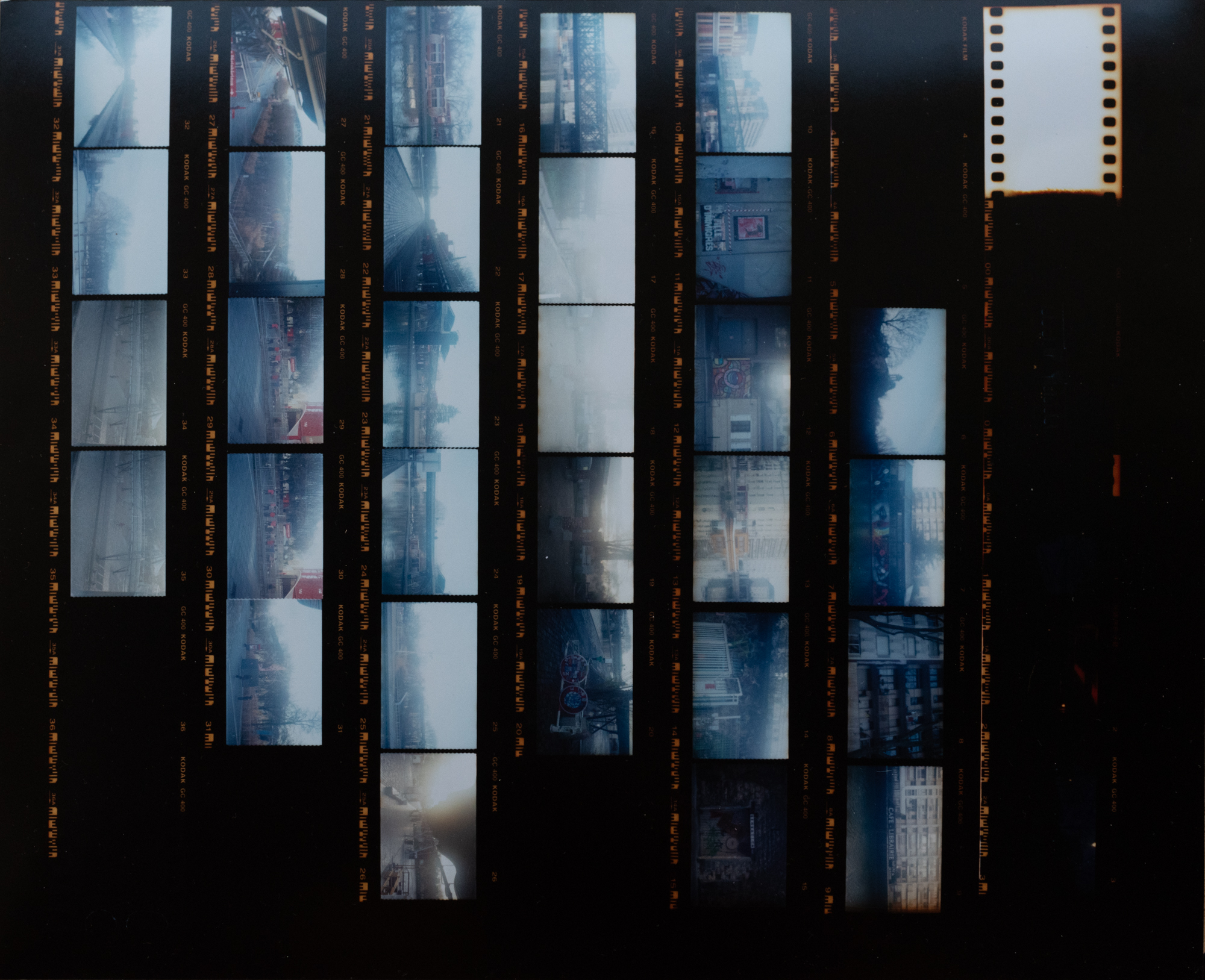
I thought the next contact sheet print was much better. Though sadly it relieved the negative weren’t that good quality. There seems to have been an issue during exposure or development that’s given most of the negatives something of a haze. I ended up developing the least hazy image, rather than my favourite image.
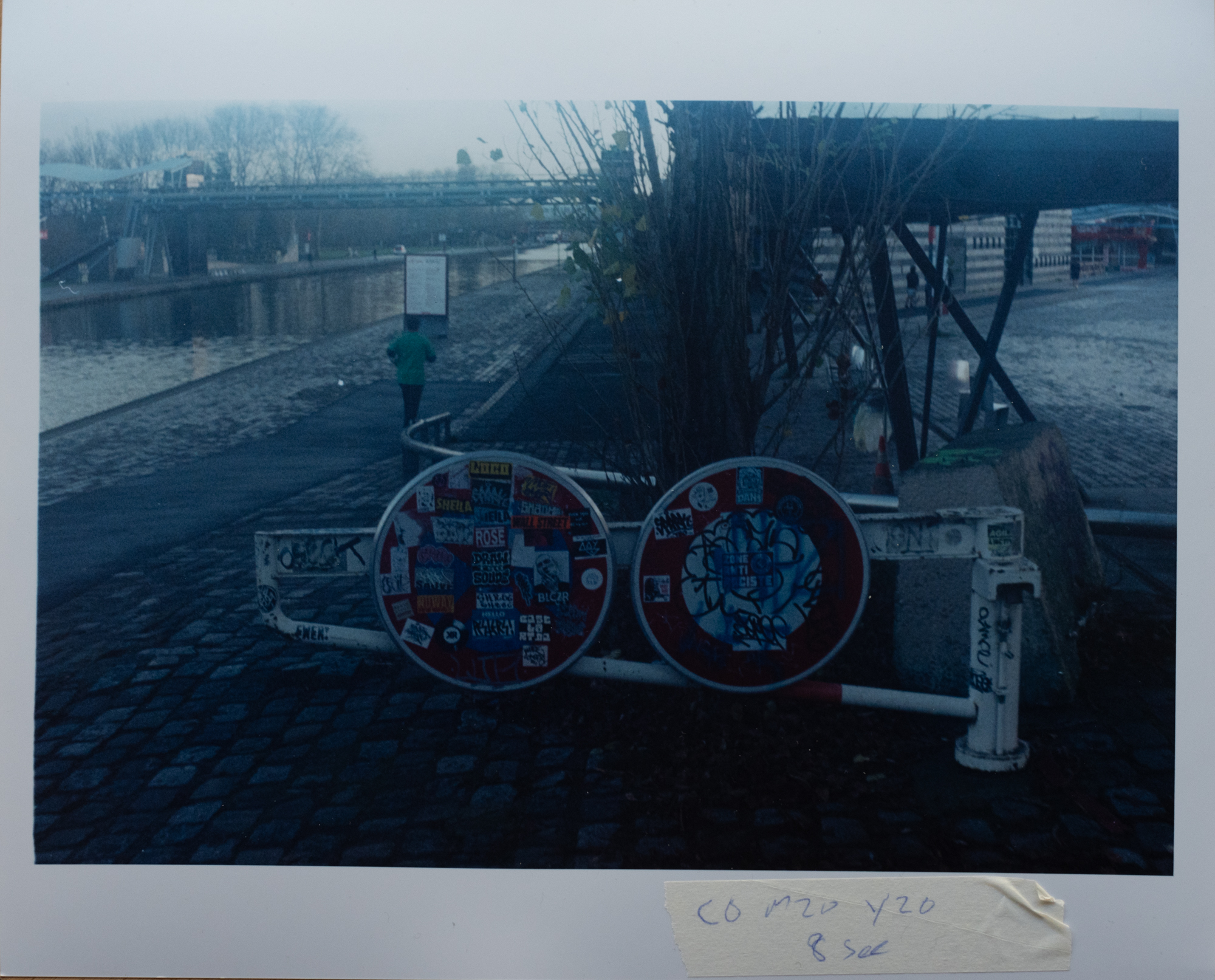
I did my first print at 8 seconds exposure and C0 M20 Y20, I found it too dark and a little blue.
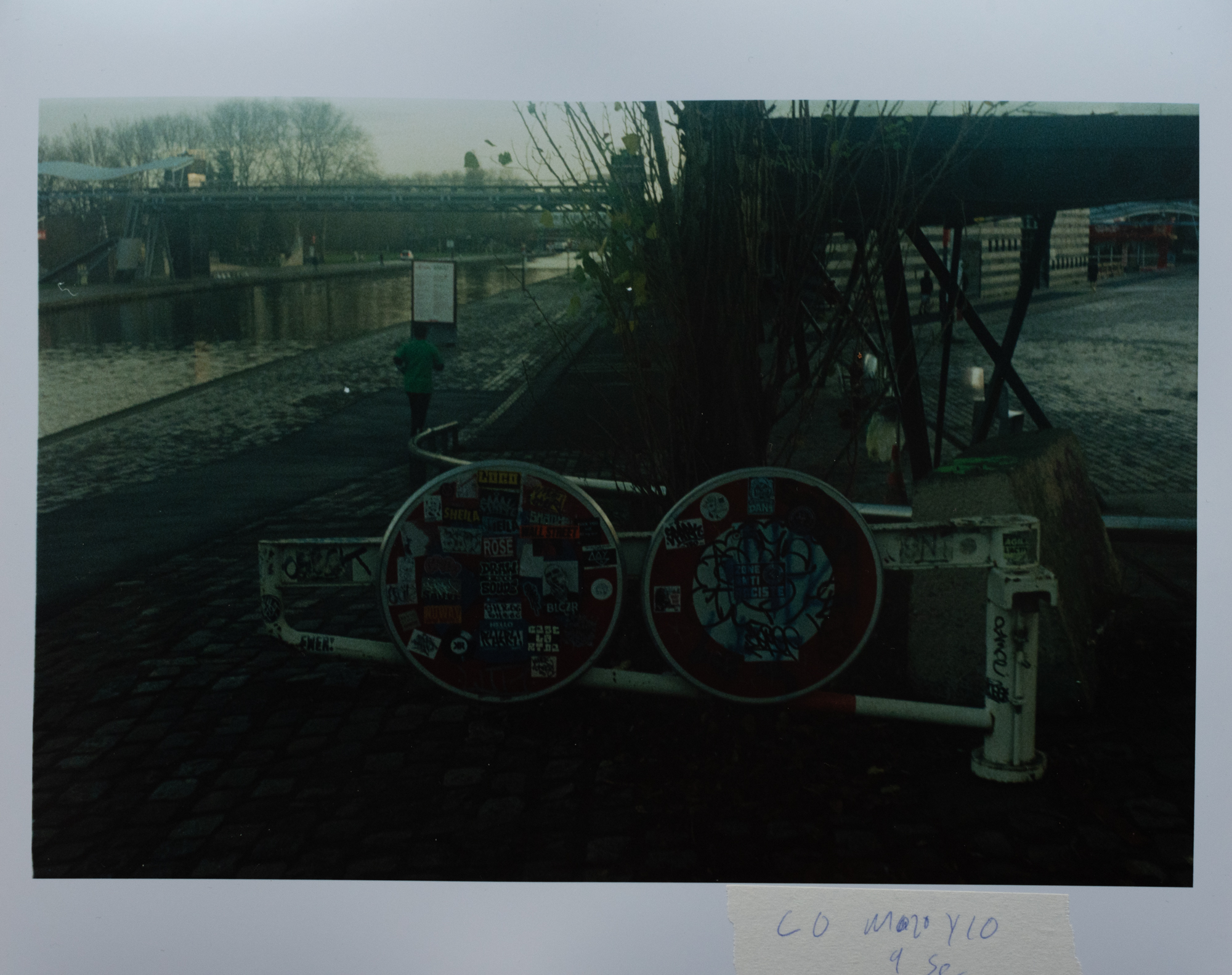
For the next print I decreased the yellow C0 M20 Y10, so the image became less blue, but I upped the exposure time making the image darker, whoops!
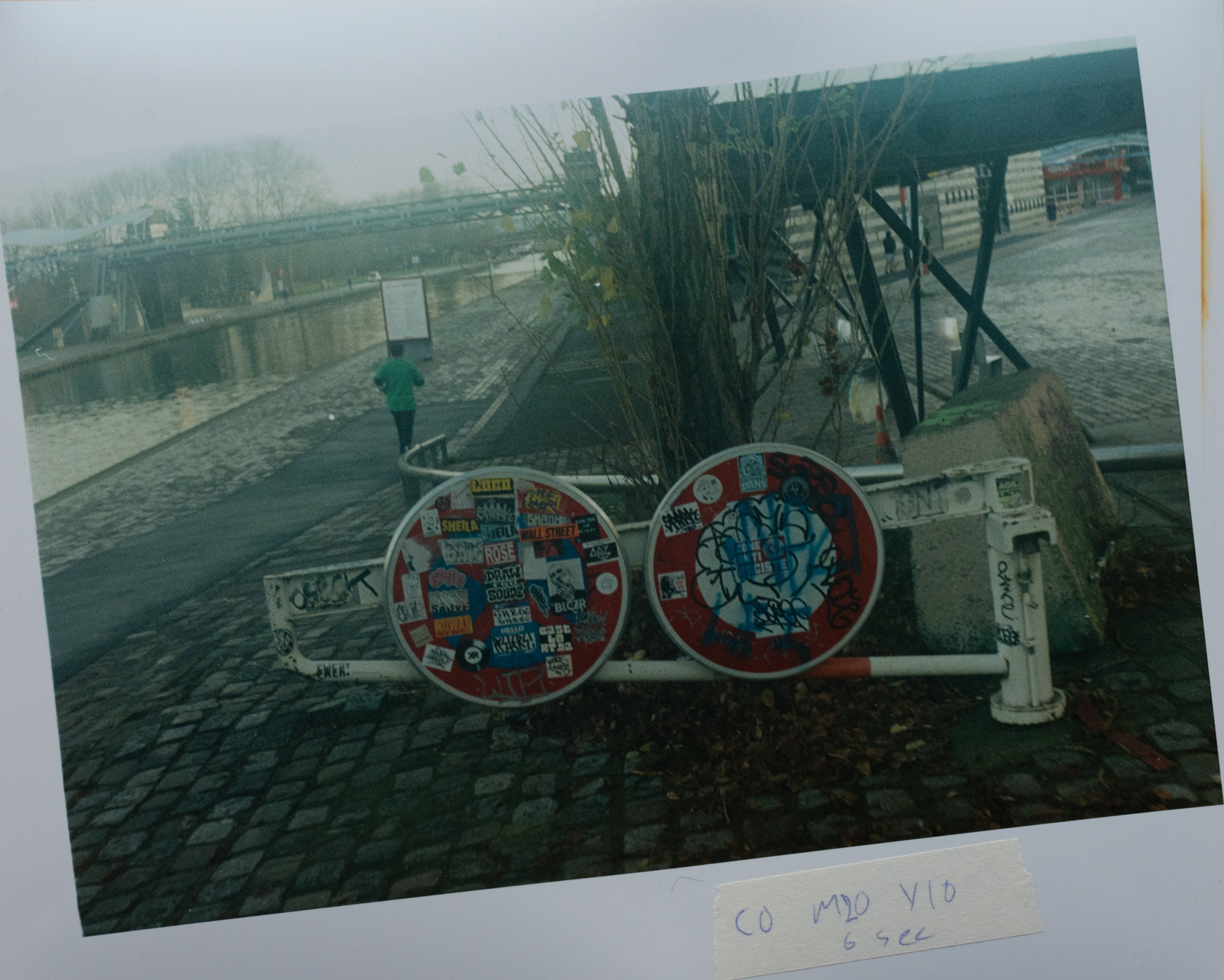
The next print was at 6 seconds and C0 M20 Y10, pretty good terms of both exposure and colour, unfortunately I’d failed to fit the paper correctly in the printing frame, so the image is slanted.
Misfitting the paper is a fairly common beginners error as it must be done in absolute dark. David showed me how to slide the paper into the frame, first up, then across, making it much less likely to make a mistake.
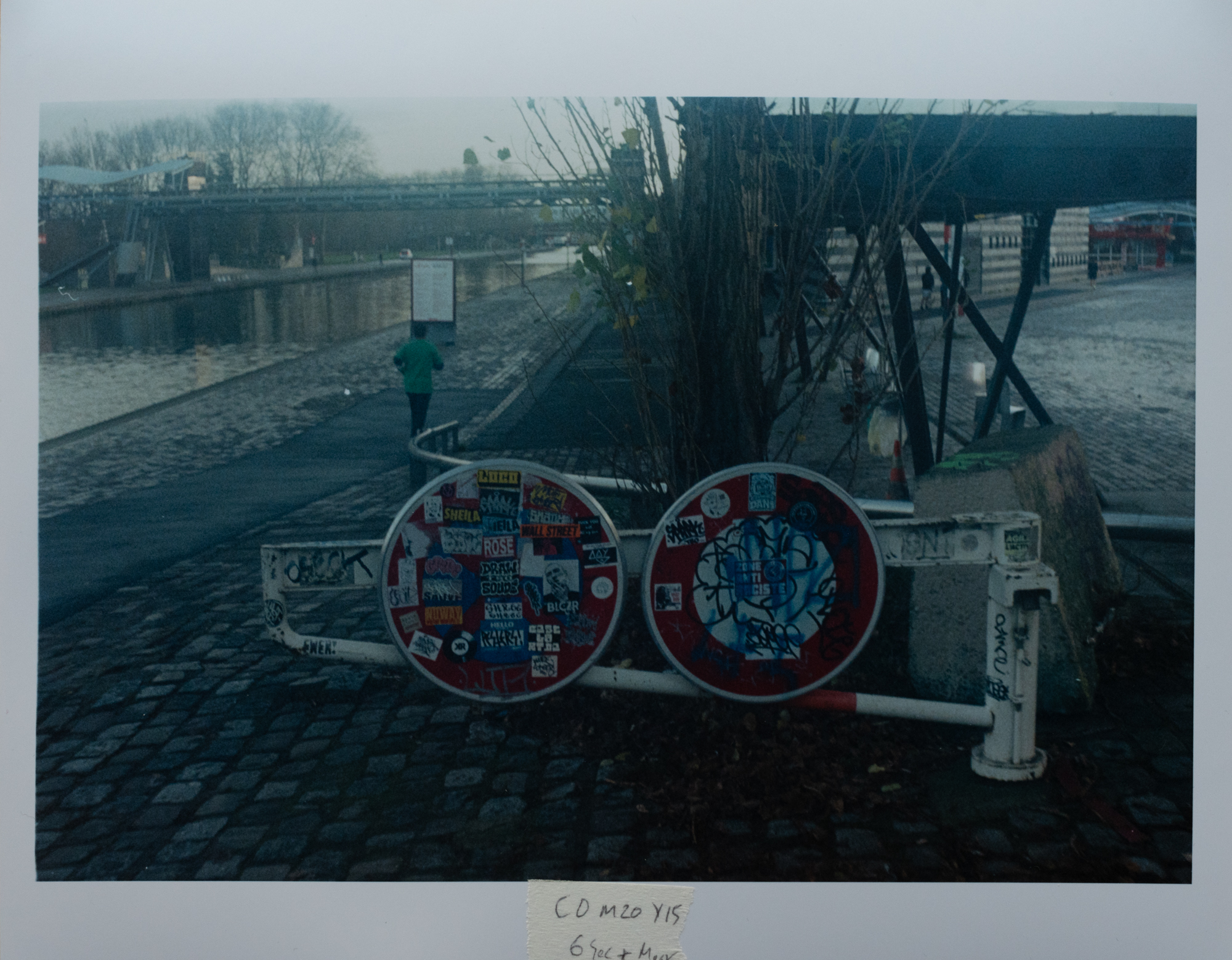
The next print was at 6 seconds and C0 M20 Y15. David showed me how to ‘mask and burn’, so I could darken the over exposed sky in the image. I gave the image another 6 seconds of exposure, ‘mask and burn’, covering the lower part of the image.
I was happy with this result. It’s not my favourite photo I’ve ever taken, but it felt good to learn to do things by hand that I’d been doing virtually in Adobe’s Lightroom software for years.
The course was great and David was an excellent teacher, you can tell he lives and breathes photography. I slightly regret not taking more care to ensure I had a good set of negatives to print, which meant I didn’t end up with great prints at the end.
I don’t think I’ll be able to make hybrid digital / analogue process work in the short term. I thought it would be fairly easy to project a digital image on photo sensitive paper, but now I understand the difficult part is tightly controlling the exposure time. Also, the projection of the digital image would need to be controlled by a laptop, which generates light and exposure needs to be done in the absolute dark.
Both problems could be overcome, but careful thought is needed on how to overcome these issues without having a dedicated dark room and building specialist equipment to project the image and control exposure time tightly.
In the short term, I think I’ll stick to printing digital images via an inkjet printer. I bought some black and white rolls film rolls and I plan to shoot and print some more black and white images. I enjoyed learning about the colour printing process, but I feel black and white gives better results for film photography
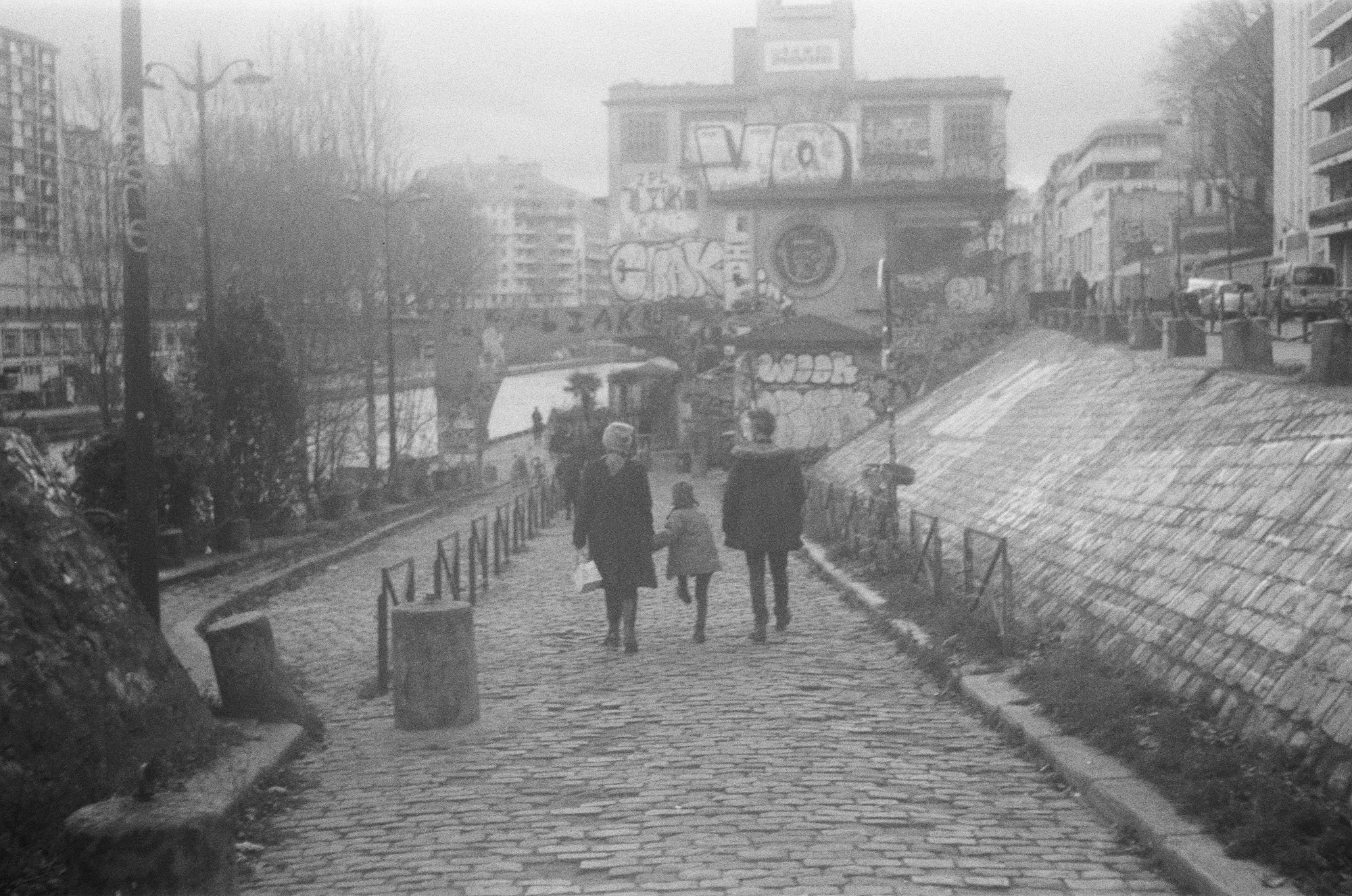
A scan of a black and white negative I took around the same time I printed the photos.
